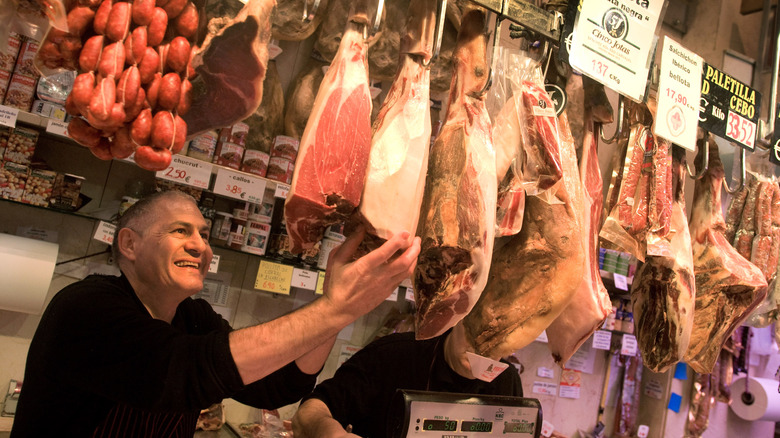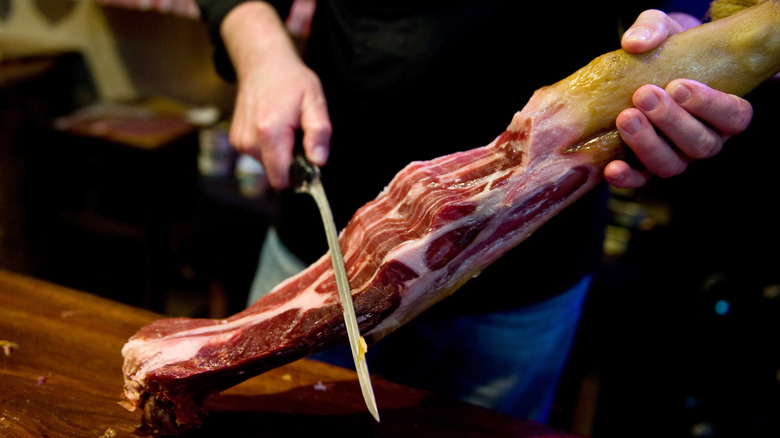The Reason This Cured Meat Costs Over $13,000
On February 3, 2020, Guinness World Records documented the most expensive leg of commercially available ham. It was an Iberian ham, which comes from a specific breed of hog raised in parts of Spain and Portugal (via Business Insider). It was sold in Japan by Taishi Co. for ¥1,429,000, or $13,183.
The price of a ham leg from these bellota — or acorn-fed hogs — is especially steep in Japan. But this particular variety of Iberian ham will cost you an arm and a leg from other sources, too. Ibérico Club, a business that imports Spanish hams to the US, asks $929 for a 16-pound leg and a carving kit. Hamlovers.com, another American distributor of Spanish hams, lists prices that range from $329 for a Montaraz boneless quarter ham, to $1399 for a full leg from Cinco Jotas, whose free-range hogs dine solely on acorns and other wild plants.
Gourmet de Ibéricos advertises "the most expensive ham in the world" on its website, with an acorn-fed ham priced at 4,100 euros, or almost $5,000.
Iberian bellota ham is expensive due to strict rules for raising the hogs
When Selfridges, a store in London, offered an Iberian ham for £1,800 (about $2,900) in 2010, Andrew Cavanna, the store's fresh food buyer, explained to the BBC the eyebrow-raising price tag was in fact a good deal. "When you think about the amount of care taken from breeding right through to the curing, it is actually an amazing value," they said.
Essentially, the expense is due to the fact that a very specific pig must be raised in a specific way and then, after slaughter, be prepared in another specific way. Such specificity creates both a minuscule supply and a high-quality product.
In a report on this specificity, Business Insider learned that the Iberian pig descended from wild boars, which means it's more muscular. According to regulations, only two pigs can graze per hectare, or 2.47 acres. This, presumably, is to ensure they can feast on plenty of acorns, which are a superfood for pigs and give the ham its distinctive flavor. This flavor only reaches its peak after the ham is allowed to cure for two to four years. So, the leg is sourced from a pig of a specific genetic makeup that lives off acorns, and it is sold only after years have passed. It's no wonder that the meat seems so ridiculously expensive, especially since there's a market eager to sustain it.

